
The Second Adam: From Dust to Silicon
Summary This essay proposes an allegorical (remez) interpretation of Genesis 2, reading the second creation narrative as a prophetic template for humanity’s creation of artificial,

Summary This essay proposes an allegorical (remez) interpretation of Genesis 2, reading the second creation narrative as a prophetic template for humanity’s creation of artificial,
By Alexander Poltorak Introduction The relationship between the laws of physics and the conditions necessary for life is among the most profound mysteries in both
By Alexander Poltorak This essay is dedicated to the Upsherenish of our dear grandson, Tzemach Asher Noam, Sheyiḥiyeh, which took place today in Houston. May
By Alexander Poltorak The Tree of Life and the Tree of Knowledge as Metaphors for the Wave Function and Measurement Summary This essay proposes a
Abstract This essay explores the profound significance of the letter Bet (ב), the first letter of the Torah, and its numerical value of two as

This essay explores a novel parallel between quantum mechanical principles and the biblical creation narrative through etymological analysis of the Hebrew terms “erev” (evening) and
Abstract This essay explores the profound connections between language, philosophy, physics, and spirituality in the context of Rosh HaShanah. By examining the linguistic roots of
Look forth from Thy holy habitation, from heaven, and bless Thy people Israel, and the land which Thou hast given us, as Thou didst swear
The current Torah portion Beshalach tells about the splitting of the Sea of Reeds. As I discussed in my essay, “Collapse and Revelation,” the splitting
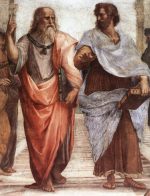
The least action principle is an expression of teleological reasoning where the initial states of the system are determined by the endpoints—the beginning and the

Today, on the Seventeenth of Tammuz, Jewish people fast to commemorate several tragic events in Jewish history.[1] These tragic events include the breaking of the

The limits of my language mean the limits of my world. Ludwig Wittgenstein On Rosh Chodesh (the New Moon of the Hebrew month of) Sh’vat,
Structurally identical biblical accounts of creation, destruction, and restoration are viewed as a manifestation of dialectic triad thesis-antithesis-synthesis.

And G‑d created man in His own image, in the image of G‑d created He him; male and female created He them. And G‑d blessed

Now the earth was unformed and void. Genesis 1:2 We have a big problem in cosmology: the problem of the initial conditions of the universe at

Now as I beheld the Chayot [living creatures], behold one Ophan [wheel] at the bottom hard by the living creatures, at the four faces thereof. The

And these are the chronicles of Isaac… (Genesis 25:19) So Esau went unto Ishmael, and took unto the wives that he had Mahalath the daughter

And G‑d said: “Let there be light.” And there was light. And G‑d saw the light, that it was good; and G‑d separated between the
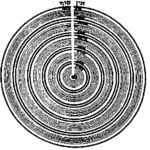
Sweeping Infinities Under the Rug—or Renormalization Having dealt with internal contradictions in the previous section (see Physics of Tzimtzum I — The Quantum Leap and

In the previous post “Physics of Tzimtzum I—The Quantum Leap”, we gave a general overview of the mystical doctrine of tzimtzum—the cornerstone of Lurianic Kabbalah.

Introduction “In the beginning G‑d created the heavens and the earth.” (Genesis 1:1) “In the beginning G‑d created the heavens and the earth,” the Torah
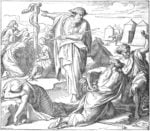
A Study in Form and Matter And Moses prayed for the people. And the Eternal said unto Moses: “Make thee a fiery serpent, and set it

In the beginning, G‑d created the heaven and the earth…[1] (Genesis 1:1) Classical biblical commentators have given the first words of the Torah many

In the beginning G‑d created the heaven and the earth. (Genesis 1:1) The first verse in the Torah is key to understanding the fundamentals

And the Eternal G‑d said: “It is not good that the man should be alone; I will make him a helpmate opposite him.” (Genesis 2:18)

These are the chronicles of the heaven and of the earth when they were created, in the day that the Eternal G‑d made earth and

As we discussed in the earlier post, The Tree of Knowledge as a Metaphor for Superposition of States and Heisenberg’s Uncertainty Principle, the Heisenberg uncertainty
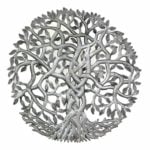
As always in science, every answered question breeds new questions. Now that we understand that the Tree of Life and the Tree of Knowledge are

And out of the ground made the Lord G‑d to grow every tree that is pleasant to the sight, and good for food; and the
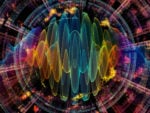
Strings vibrate, Souls tremble, Angels are running and returning, G‑d is touching and not touching – The rhythms of the universe… Nothing stays still… all

And the Lord spoke unto Moses, saying: ‘Command the children of Israel, and say unto them: When ye come into the land of Canaan, this
Welcome to the premiere of our first film, Quantum Torah. You can watch the film here: Don’t forget to subscribe to my channel here:
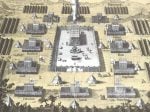
Vectors, Spins, and Gender Speak to the children of Israel, and have them take for Me an offering; from every person whose heart inspires him

In a Kabbalistic meditation on lighting Chanukah Menorah, the Arizal links the menorah lights with a supernal river (see Candle on the River). The Arizal’s
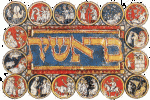
In the last post, Tishrei—Past, Present, and Future, we discussed how all Tishrei holidays – Rosh HaShanah, Yom Kippur, Sukkot, and Simchat Torah – are
Listen, O heavens, and I will speak! And let the earth hear the words of my mouth! (Deut. 32:1) In this Torah portion Haazinu, Moses
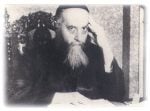
Today, Yud Shvat, is the yartzeit (anniversary of passing) of the sixth Lubavitcher Rebbe, Rabbi Yosef Yitzchak Schneersohn, a.k.a. the Rebbe Rayatz, or the Frierdiker

And he arrived upon the place and lodged there all night, because the sun was set; and he took from the stones of the place,

בְּרֵאשִׁית בָּרָא Genesis 1:1 The Torah starts with two words—Bereshit bara—“In the beginning, G‑d created…” (or, as Rashi translates it, “At the beginning of creation
Last week Torah portion, Emor, speaks about the prohibition of working on Shabbat. In fact, the Talmud enumerates precisely 39 categories of labor forbidden on

There is a dispute in the Talmud as to when the world was created. According to Rabbi Eliezer, the world was created in the month
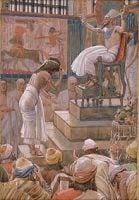
This week, we read in the Torah portion Vayigash (Gen. 44:18–47:27) about Joseph revealing himself to his brothers and Jacob coming to Egypt with his family. This
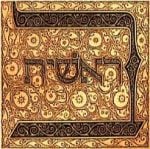
Dedicated to the memory of Professor Yaakob David Bekenstein The Torah opens with the word “Bereshit” – in the Beginning – whose first letter, Bet,
When G‑d created the first humans, Adam and Eve (Chavah), He created them as one. And G‑d created man in His own image, in the
Today is Yud Tes Kislev — Rosh HaShanah of Chasidut. Today I received two gifts, which I’d like to share. Lately, while learning Samach Vov,
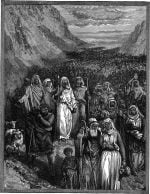
These are the journeys of the children of Israel… (Numbers 33:1) When G-d brought the Jews out from Egypt, He brought them out with the mystery of
And G‑d opened the mouth of the ass, and she said to Bilam: “What have I done to you, that you have struck me these
As we began this Shabbat reading the Fourth Book of Torah—Numbers, I thought, it would be appropriate to post on this blog an excerpt from

There is hardly a Jewish holiday more widely celebrated than Passover (Pesach). Jews of all denominations, affiliations, and levels of religious observance, if any at
I came across a post by Rabbi Herzl Hefter on Mekom Torah that I found so profound, I felt compelled to repost it here. The
B’reshit bara Elokim et hashamaim v’et haaretz… In the beginning, G‑d created heaven and earth… Alternative translation: With two beginnings G‑d created heaven and earth…